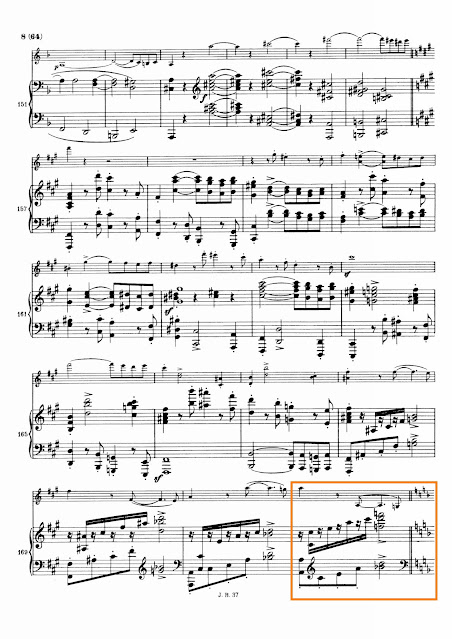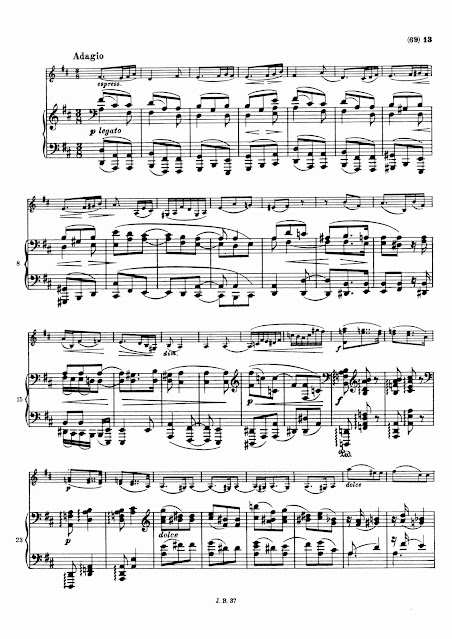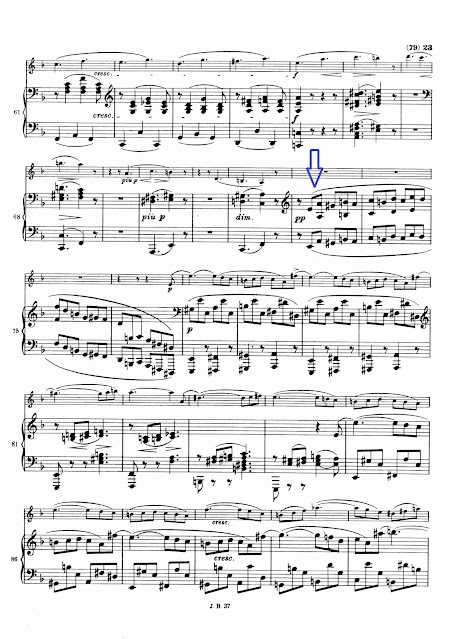CCCLVI. BRAHMS, Johannes (1833-1897)
Unlike his first two violin sonatas, Brahms used the symphonic four-movement form for this, the last of the three.
First Movement
Traditional sonata-allegro form. The first subject is stated sotto voce by the violin with the piano playing off-beats in the right hand, creating a slightly agitated feeling:
The second subject (blue star) is in F Major, stated by the piano alone and then violin accompanied by simple arpeggios:
The exposition concludes with three soft F Major chords. The development takes off with the violin using bariolage bowing while the piano plays pedal point A's for 46 bars!
In the recapitulation, the violin restates the theme an octave lower:
Direct modulation to F-Sharp Minor:
Back to D Minor:
and then to D Major for a restatement of the second subject:
and finally back to D Minor; the violin restating the theme in the original higher octave:
After some further development and hints of previous themes, Brahms closes the movement with a Picardy third ...
Second Movement
D Major, 3/8, lyrical and calm:
until the introduction of double-stops, forte:
The movement concludes with a bravura passage in the violin; a restatement of the theme in double-stops, and a hushed conclusion:
Third Movement
A jolly 2/4 in F-Sharp Minor, the piano takes over, with the violin providing simple off-beats accompaniment:
Modulates to D Minor, the violin now in triple-stops with the piano now providing the off-beats:
Back in F-Sharp Minor, the violin and piano combine with lightning speed figurations, and again ending softly on an authentic cadence.
Fourth Movement
Kavakos and Wang pull out all the stops here for a frenetic 6/8 jam suggestive of a tarantella.
Things get down to the micro level with swishes of notes in both instruments (brown box)


























No comments:
Post a Comment